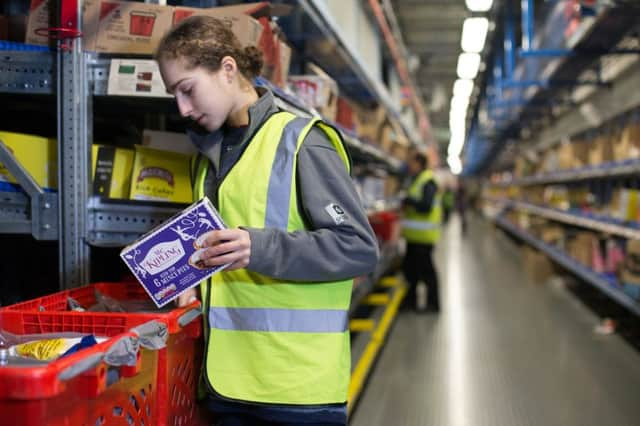'˜Big four' grocers come out fighting in high street wars


Tesco, Asda, Sainsbury’s and Morrisons remain under pressure with sales declining at each of them over the last quarter, although Tesco showed the smallest drop in sales of 1 per cent in a sign it is stabilising in comparison to historic declines over the past two years.
The latest data from Kantar Worldpanel indicates the market was “essentially flat” during the period, posting value growth of just 0.1 per cent, but the figures show consumers are sharing their spending around retailers rather than turning away from the big four.
Advertisement
Hide AdAdvertisement
Hide AdMeanwhile, Waitrose managed to capture a record 5.3 per cent slice of the UK grocery market over the past quarter, the figures reveal.
Kantar Worldpanel director Edward Garner said: “While the big four are struggling to keep their market share what’s clear is that consumers aren’t flocking away from their stores – their combined shopper numbers have dropped only 0.2 per cent in the latest 12 weeks. In fact, 94 per cent of Aldi and Lidl shoppers still visit at least one of the four major retailers every four weeks.
“However, consumers’ spend is increasingly being shared with other growing outlets which also include Waitrose, the Co-operative and Iceland and average household spend for the big four has dropped by 2.9 per cent.”
Sainsbury’s sales slipped 1.2 per cent, which led to a drop in its market share to 16.2 per cent, driven by a decline in pack sales after the retailer shifted away from promotions to everyday price cuts. Asda saw sales fall 5.1 per cent on last year, giving it a 15.8 per cent share of the market.
Waitrose’s record share of 5.3 per cent came after the employee-owned chain increased sales by 2.1 per cent, while the Co-operative continued its recent strong run, posting sales growth of 3.3 per cent for the second period in a row to achieve a market share of 6.2 per cent. Lidl and Aldi remain the fastest growing retailers, taking market shares of 14.2 per cent and 11.4 per cent respectively. Kantar Worldpanel said this was due to the strong performance of their premium own-label brands as well as low prices.
Meanwhile, Nielsen reported the most encouraging UK supermarket sales figures in more than eight months, with the value of sales down just 0.1 per cent compared with a year ago. Mike Watkins, Nielsen’s UK head of retailer and business insight, said: “With the proportion of shoppers switching to cheaper grocery brands to save money at a lowest-ever level, this indicates that initiatives to reduce prices permanently and run less promotions is resonating well with shoppers.”
The amount of the average supermarket shopping bill that went on promotional items in the four-week period remained at the new seven-year low of 29 per cent.